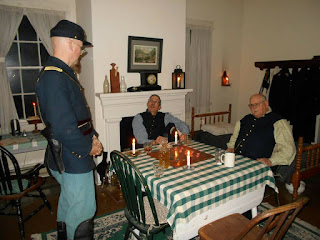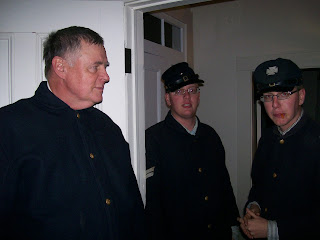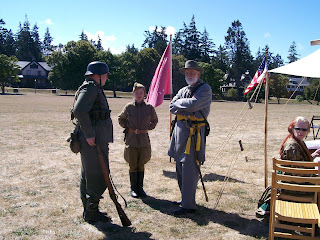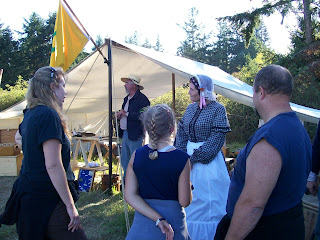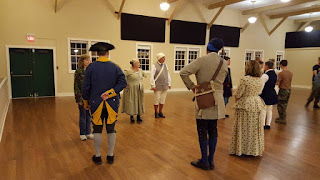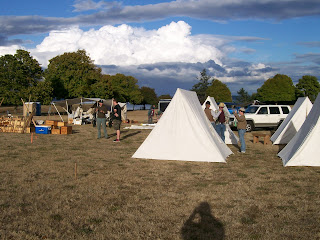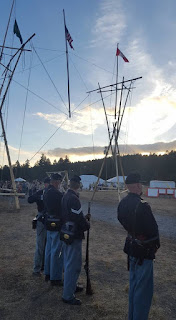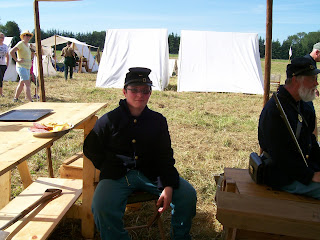DRESS: HOW TO ADORN THE PERSON.
BY MRS. M. L.
Who is there amongst us wholly indifferent on this point? We really think not one. Some may be careless, and some misjudging, yet even the most eccentric have some fancy of superiority in their oddities. Our desire is simply to advise and aid those who are not confident in their own good taste. Simple as the subject of dress may be, and frivolous as many deem it, yet it is very essential, and, indeed, important. We would not have it occupy all the attention of our fair friends, but we wish to assist those who would dress well, without devoting too much thought to the attainment of this object.
All are indebted, more or less, to the adornments of the person. Let them be neglected, and the deficiency would be evident, even though the cause might not be traced. Therefore, let us give it our attention, and see in what we can improve that which is good, and remedy that which is defective. Our province is to advise, not to dictate; therefore, we must make no rules absolute. The most attractive part of our subject, of course, is taste and style; yet we consider many useful hints with regard to neatness, quality, and expenditure. There is no doubt that the grand regulator of dress must be the purse; yet the humble, by good taste, may furnish an agreeable contrast, and, in fact, gain more in appearance by neat and well-chosen garments, than the rich in gaudy attire. The great difficulty with most of our fair friends is conformity of habiliments, the temptations of the plate-glass windows so often leading them to purchase dresses without having one other article of attire to correspond. The dress, of course, must be worn, at the sacrifice of good taste. In our days, dress, as well as cookery, has become a science, as much as an art ; even the minutiae of a lady's dress, such as the purse, pocket-handkerchief, etc., are now objects of care and labor. We remember, not very many years ago, when a plain silk or leather purse was considered all-sufficient ; at present, each lady seems to use a purse of more artistic production than her neighbor. As we remember well when crochetwork and knitting were mysteries and high accomplishments, and we consider that we are indebted for the wide dissemination of the taste for working and the means of producing the many beautiful articles we now see to the Lady's Book, we hope, in the same way, that our trifling efforts, through its pages, will not prove vain, and that we shortly may witness the evidence of an improved taste and style in dress.
We have no paucity of material to complain of now ; the varieties of texture and design are endless. Our chief difficulty lies in selection. Neither can we murmur at excessive prices. We are told that a Roman empress was refused by her lord a robe of silk as being too costly ! In our days, the most simple maiden is clad in what a Roman empress could not afford. Cotton and its beautiful printed varieties was but little known in those days; the empress was therefore condemned to heavy woolen textures—not bareges—or stiff and unpliable robes of linen. It is true, the long and flowing drapery looks well and classical in sculpture, yet in fact it could not have been as pleasant and convenient as our own style.
Let us now to our task—to consider and review our dresses, bonnets, and shawls, or their substitutes. These claim our first attention ; but we shall not omit the many minor articles forming the toilet of a lady. It is not to be denied, that all of us acknowledge the superiority of the French in everything that appertains to the toilet ; then let us endeavor to discover the main points and reasons of that superiority. Why do we always blindly follow their dictates, and yet never approach them ? We are led by the mere spirit of imitation, unguided by reason. We believe it is natural to French women to dress well, and they give the subject less consideration than we do. Whatever they pronounce
comme il faut we fancy and follow, very seldom thinking of the
comme il faut ourselves. Fashion is woman's idol, or what the magazines and their dressmakers designate as fashion. We blindly follow fashion, without consulting its becomingness; neither do we consider sufficiently the changes of season that a summer fashion will not suit a winter dress; and if we wear tarletan flounces on muslins and zephyr bareges, we must do the same on heavy merinos and gloomy carmelites. Again, our ladies will make a material fit only for morning wear in a full-dress style, and vice versa. This is bad taste, and gives the appearance of being ill-dressed.
We will now review a little our material for dresses. We are infinitely better off in this respect than our great-grandmothers of seventy years since; ay, and even have a very much greater variety of choice than our mothers had twenty-five years ago. Every season brings a number of novelties in designs and textures, for our choice and use. Every quarter of the globe sends its fabrics, formerly rare indeed, and to be obtained only at a great cost. Our own manufactures, too, are greatly improved, although the old ladies say there are no such cottons made as in their days. There are, indeed, but we procure a silk dress for the price they paid for one of their cottons. To our own taste, a cotton dress, good and neat in pattern, is, for most ladies, young ones especially, the prettiest for morning wear; then it must be well made. We would recommend every lady to be particular on that point, i. e. to have her dress well fitting ; and if economy be the consideration, let her have two dresses in lieu of three, and let the cost of the third pay for the making of the two.
There is a very remarkable reason why the French appear, at a general view, so much neater than ourselves. It is one which is beyond our power to regulate, and has doubtless arisen from our great and practical freedom. They have, so to speak, a class-dress, even in cities, where there is no decided costume. No one thinks in Paris of dressing the same as her neighbor, who is in a rank of life superior to herself. Servants will not attire themselves like the bourgeoisie,' these, again, do not imitate their superiors in rank or station. Therefore, all servants will be dressed in neat and new apparel, when requisite, and do not purchase the faded finery of their mistresses, or the cheap and gaudy things which look like it ; and the
marchande de mode would disdain to wear the cast-off velvets of a duchess. She finds her own neat merino and straw bonnet much more becoming her style and station.
The French pay, too, a much greater attention to combination and assimilation of colors ; and their linen, collars, etc. are got up with so much greater care, which gives the finish to their dress. We cannot complain of this as much as we might have done some years ago, for collars, caps, etc. are generally ironed in the French style.
Having now seen in what material points we differ from the French, let us consider how best we shall dress ourselves. Much we fear we shall have to encounter "Fashion" at every point; and we certainly are of opinion that, if the "Bloomer costume" were to appear in the Lady's Book on the first of the month, we should see it in Chestnut Street or Broadway within a week after. We most sincerely trust that it will not make its appearance under such authoritative auspices. We do not admire the dress; it is unfeminine, and therefore to be avoided. We are thoroughly delighted that those nondescript paletots have disappeared, and the graceful mantillas for summer, and burnous for winter wear, have substituted them. With the cloaks there is a little inconsistency prevailing, when lace hoods are worn upon silken mantles. A hood is most surely meant as a protection from weather ; in such materials it can afford none, and is a most ungraceful appendage, giving the effect of high shoulders. In consideration of its probable utility, we can pardon it for winter wear.
Godey's Lady's Book, March 1860


